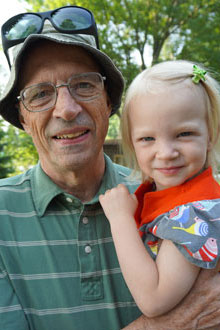Faculty Spotlight:
George C. Schatz
By Irena Garic
Tells us more about how your career path led you to Northwestern University?
I had just arrived in the fall of 1976 as a postdoc at MIT. It was a year early for me to be applying for jobs, but I got a letter from Mark Ratner, saying that he had heard about my work as a graduate student at Caltech and he encouraged me to apply for a position at Northwestern. I had never been to Northwestern at that point, but Northwestern had an excellent reputation so I decided to apply. Later they made me a job offer, and while I was pondering whether to accept, Ratner visited me at MIT, and spent an afternoon talking to me about his vision for making Northwestern better. And he wanted me to be part of it. I was delighted to accept!
What is the best part about being at the Northwestern University?
The best part of Northwestern is the faculty, students and postdocs. If you want to be excited about a job, just be surrounded by interesting and talented people and it will happen. It also doesn't hurt that Evanston is a great place to live.
Describe your teaching style?
My mother was a grade school teacher, and so were my sisters, so I got a heavy dose of teaching methodology in my youth. I teach classes at the beginning freshman level and also advanced graduate, but the basic philosophy is the same: just present the material clearly, and at a level that will make sense to the student but challenge them too. I also try to keep my lectures lively, even for a chalk talk that is full of equations.
What are your current research interests / projects and tells us little bit about that?
I'm very excited about light interacting with arrays of nanoparticles. It is a topic that we've been thinking about for over 20 years, but it keeps evolving, providing new opportunities. And it allows me to collaborate with such people as Teri Odom, Chad Mirkin, Rich Schaller, Mike Wasielewski, Lin Chen and others who are studying problems related to this topic. In another direction, I feel there are great opportunities for using molecular simulations for understanding soft materials and their assembly from polymers, peptides, DNA and other molecules. This is another great strength of Northwestern, where I work with Sam Stupp, Son Binh Nguyen, Teri Odom, Chad Mirkin and others. Of course theory is what I do, and fortunately I've had Mark Ratner as a colleague in that field for over 40 years, and then more recently Monica Olvera, and very recently Todd Gingrich.
What are some potential applications for the work that you’re doing?
Heaven forbid that I would do something applied! What really excites me is to discover new theories or concepts. Along the way this can occasionally lead to applications, but my usual statement is that when a project gets to the point where it is spinning off applications, it is time for me to move on. I do have some patents and patent disclosures, and one of my computer programs is embedded in commercial mass spectrometry software that is commonly used, but I’m usually not paying attention.
Do you have any advice for young researchers considering a career in academia?
Do what you are passionate about! But recognize that not everything works, and not everything is worth pursuing forever even when it does work.
What is one thing not on your CV that you would like us to know?
I have three beautiful granddaughters, ages 1, 3 and 6. It is great to get together. In the winter I like cross country skiing, and in the summer you will see me jogging around Evanston.

